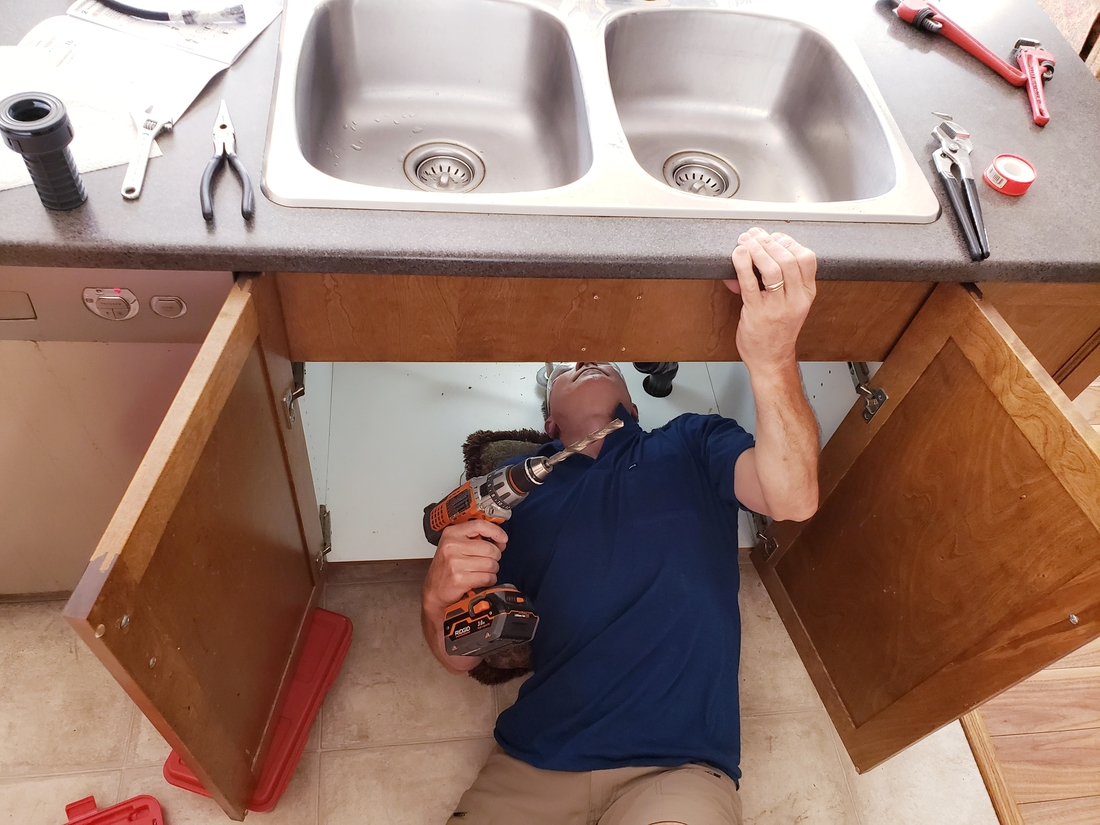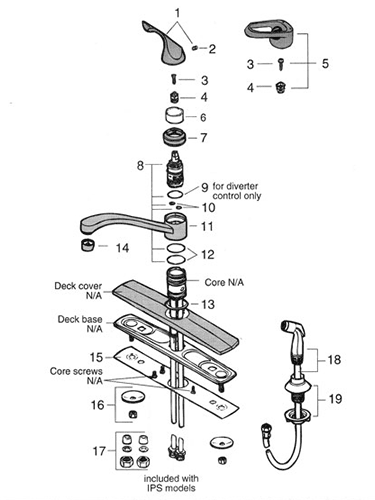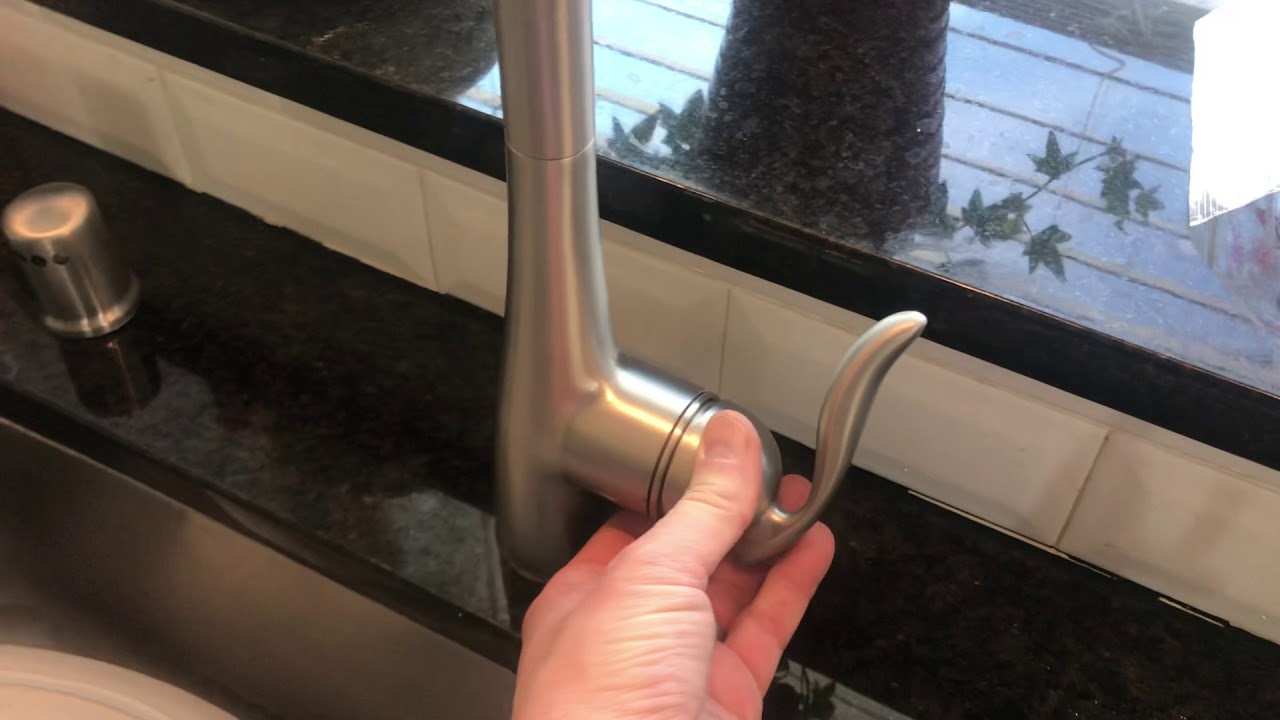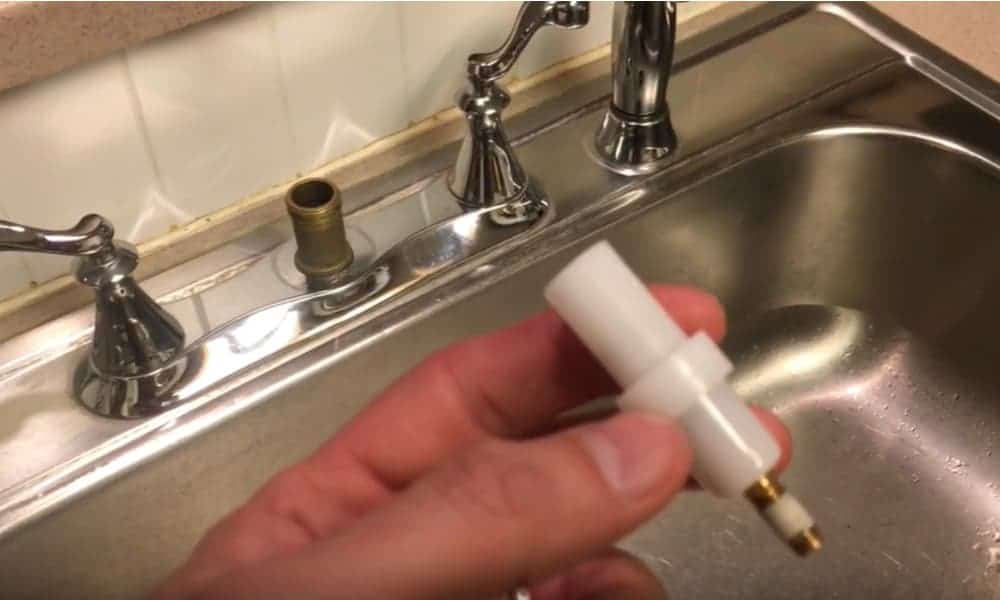If you've noticed a constant drip from your kitchen sink faucet, you're not alone. A leaky faucet is a common problem that can waste water and drive up your utility bill. But don't worry, fixing a leaky kitchen sink faucet is a relatively simple DIY task that you can do yourself with just a few tools and some basic knowledge. First, identify the source of the leak. Is it coming from the spout or the handle? If it's the spout, you may just need to replace the faucet's o-ring or washer. If it's the handle, you may need to replace the valve stem or cartridge.How to Fix a Leaky Kitchen Sink Faucet
Before you begin any repairs, make sure to turn off the water supply to your kitchen faucet. You can usually do this by turning off the valves under the sink. Next, cover the drain with a towel to prevent any small parts from falling in. Now, it's time to disassemble the faucet. Use a screwdriver or adjustable wrench to remove the handle and the stem bonnet. Once you have access to the interior of the faucet, you can replace any damaged or worn out parts. Be sure to clean any sediment or debris from the faucet while you have it disassembled.DIY: Fixing a Dripping Kitchen Faucet
If you're not sure which parts need to be replaced, take the old ones to your local hardware store to find matching replacements. Once you have the new parts, reassemble the faucet in the reverse order that you took it apart. Turn the water supply back on and test the faucet for any leaks. If it's still leaking, you may need to replace the entire faucet. If you're not comfortable with disassembling and repairing your kitchen faucet, you can always hire a professional plumber to do the job for you. Just be sure to get multiple quotes and check references before making a decision.Step-by-Step Guide to Repairing a Kitchen Faucet
Aside from leaks, there are a few other common problems that you may encounter with your kitchen sink faucet. One of the most frustrating is a low water pressure. This can be caused by a clogged aerator or cartridge. Simply clean or replace these parts to restore proper water flow. Another common issue is a stiff or loose handle. This can be easily fixed by tightening or replacing the handle screw. If your faucet has a pull-out sprayer, you may also experience leaks or difficulty retracting the sprayer. In this case, the spray head or hose may need to be replaced.Common Problems and Solutions for Kitchen Sink Faucets
A loose handle can be a nuisance but it can also lead to bigger problems if left unchecked. To fix a loose kitchen faucet handle, you may need to tighten the handle screw or replace it altogether. If the screw is tight and the handle is still loose, the valve stem or cartridge may be worn out and need to be replaced.Fixing a Loose Kitchen Faucet Handle
If your kitchen sink faucet is beyond repair, you may need to replace it entirely. This may seem like a daunting task, but with the right tools and some basic knowledge, it's a task that you can tackle as a beginner. Start by turning off the water supply to your faucet. Next, use a basin wrench to remove the old faucet. Once the old faucet is removed, clean the area where the new faucet will be installed. Then, follow the manufacturer's instructions to install the new faucet. Be sure to turn the water supply back on and test for any leaks before calling it a job well done.Replacing a Kitchen Sink Faucet: A Beginner's Guide
If your kitchen faucet is not working at all, there are a few things you can check before calling a professional. First, make sure the water supply is not turned off. Next, check the valve shut-off under the sink to make sure it is open. If these are not the issue, there may be a problem with the cartridge or valve stem that will require replacement.Troubleshooting Tips for a Malfunctioning Kitchen Faucet
Single handle kitchen faucets are becoming more popular, but they can be a little trickier to repair than traditional two-handle faucets. If your single handle faucet is leaking, you may need to replace the cartridge. First, make sure to turn off the water supply and disassemble the faucet. Then, replace the old cartridge with a matching one and reassemble the faucet.How to Repair a Single Handle Kitchen Faucet
A clogged kitchen sink faucet can be a frustrating problem, but it's usually an easy fix. Start by removing the aerator and cleaning any debris or sediment that may have accumulated. If this doesn't solve the problem, you may need to remove and clean the cartridge or valve stem.Fixing a Clogged Kitchen Sink Faucet
Before attempting to replace your kitchen sink faucet, make sure you have all the necessary tools and materials. These may include a basin wrench, adjustable wrench, screwdriver, and plumber's tape. You may also need replacement parts such as a new faucet, cartridge, and aerator.Replacing a Kitchen Sink Faucet: Tools and Materials You'll Need
Why Fixing Your Kitchen Sink Faucet is Essential for a Functional and Stylish Home
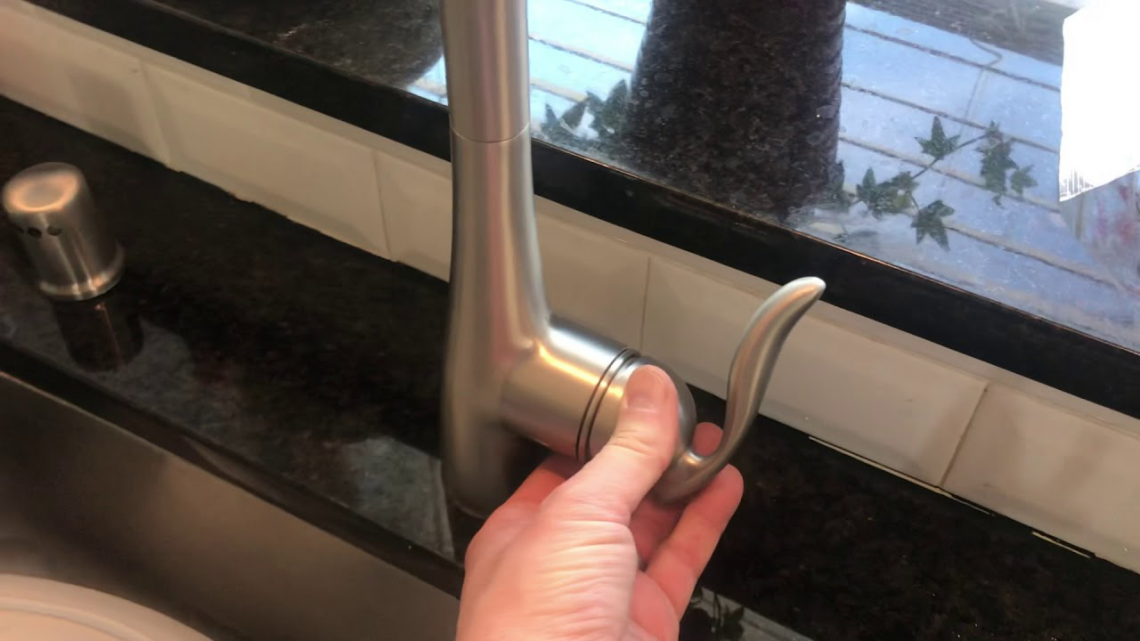
The Kitchen Sink Faucet: More Than Just a Water Source
 When it comes to designing a house, the kitchen is often referred to as the heart of the home. It's where we gather to cook, eat, and spend quality time with our loved ones. As such, it's important to have a kitchen that is not only functional but also aesthetically pleasing. One crucial component of a functional and stylish kitchen is the
kitchen sink faucet
. While it may seem like a minor detail, a malfunctioning or outdated faucet can greatly impact the overall look and functionality of your kitchen. That's why it's important to
fix your kitchen sink faucet
as soon as you notice any issues.
When it comes to designing a house, the kitchen is often referred to as the heart of the home. It's where we gather to cook, eat, and spend quality time with our loved ones. As such, it's important to have a kitchen that is not only functional but also aesthetically pleasing. One crucial component of a functional and stylish kitchen is the
kitchen sink faucet
. While it may seem like a minor detail, a malfunctioning or outdated faucet can greatly impact the overall look and functionality of your kitchen. That's why it's important to
fix your kitchen sink faucet
as soon as you notice any issues.
The Importance of a Functional Faucet
 A
functional faucet
is an essential part of any kitchen. It's the main source of water for cooking, cleaning, and drinking. A leaky or clogged faucet can make these simple tasks a hassle and even lead to wasted water and higher utility bills. In addition, a faulty faucet can also affect the water pressure, making it difficult to properly wash dishes or fill up pots. Ignoring these issues can cause even bigger problems in the long run, such as water damage and mold growth.
A
functional faucet
is an essential part of any kitchen. It's the main source of water for cooking, cleaning, and drinking. A leaky or clogged faucet can make these simple tasks a hassle and even lead to wasted water and higher utility bills. In addition, a faulty faucet can also affect the water pressure, making it difficult to properly wash dishes or fill up pots. Ignoring these issues can cause even bigger problems in the long run, such as water damage and mold growth.
The Impact of a Stylish Faucet
 Aside from functionality, the
style of your kitchen sink faucet
can greatly impact the overall design of your kitchen. A sleek and modern faucet can elevate the look of your kitchen and make it more visually appealing. On the other hand, an outdated or mismatched faucet can make your kitchen look dull and uncoordinated. By
fixing your kitchen sink faucet
, you not only ensure its functionality but also enhance the overall aesthetic of your kitchen.
Aside from functionality, the
style of your kitchen sink faucet
can greatly impact the overall design of your kitchen. A sleek and modern faucet can elevate the look of your kitchen and make it more visually appealing. On the other hand, an outdated or mismatched faucet can make your kitchen look dull and uncoordinated. By
fixing your kitchen sink faucet
, you not only ensure its functionality but also enhance the overall aesthetic of your kitchen.
Call in the Professionals
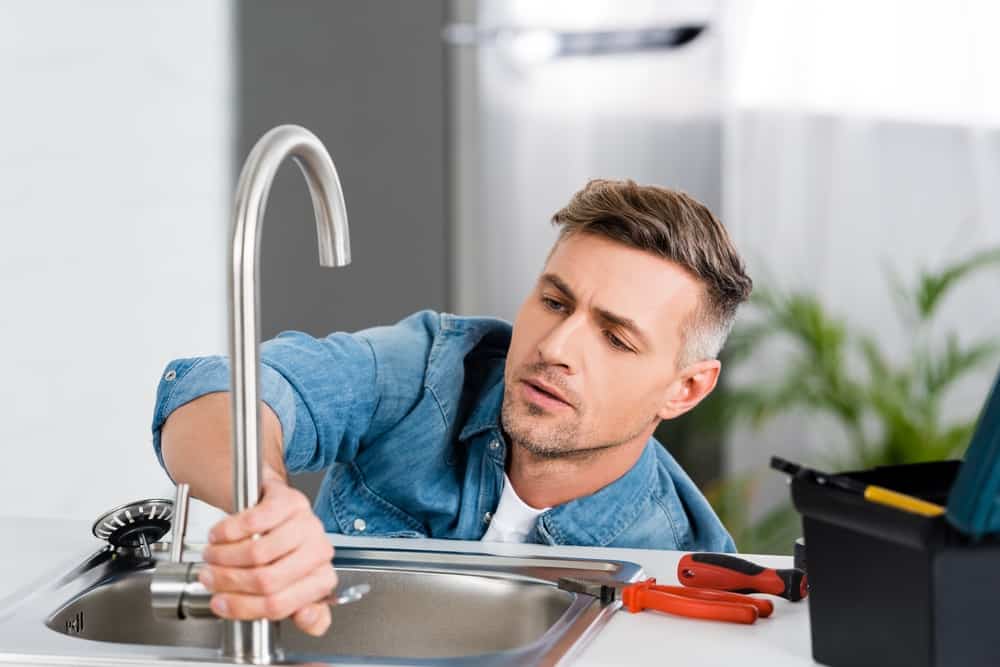 While some may attempt to
fix their kitchen sink faucet
themselves, it's always best to leave it to the professionals. A licensed plumber has the expertise and tools to properly diagnose and repair any issues with your faucet. They can also help you choose a new faucet that fits your kitchen's style and budget. With their help, you can have a fully functional and stylish kitchen sink faucet in no time.
While some may attempt to
fix their kitchen sink faucet
themselves, it's always best to leave it to the professionals. A licensed plumber has the expertise and tools to properly diagnose and repair any issues with your faucet. They can also help you choose a new faucet that fits your kitchen's style and budget. With their help, you can have a fully functional and stylish kitchen sink faucet in no time.
In Conclusion
 The kitchen sink faucet may seem like a small detail, but it plays a significant role in the functionality and style of your kitchen. By taking care of any issues and updating your faucet, you can ensure a more efficient and visually appealing kitchen. Remember to always call in the professionals for any repairs or replacements, and you'll have a beautiful and functional kitchen for years to come.
The kitchen sink faucet may seem like a small detail, but it plays a significant role in the functionality and style of your kitchen. By taking care of any issues and updating your faucet, you can ensure a more efficient and visually appealing kitchen. Remember to always call in the professionals for any repairs or replacements, and you'll have a beautiful and functional kitchen for years to come.


































